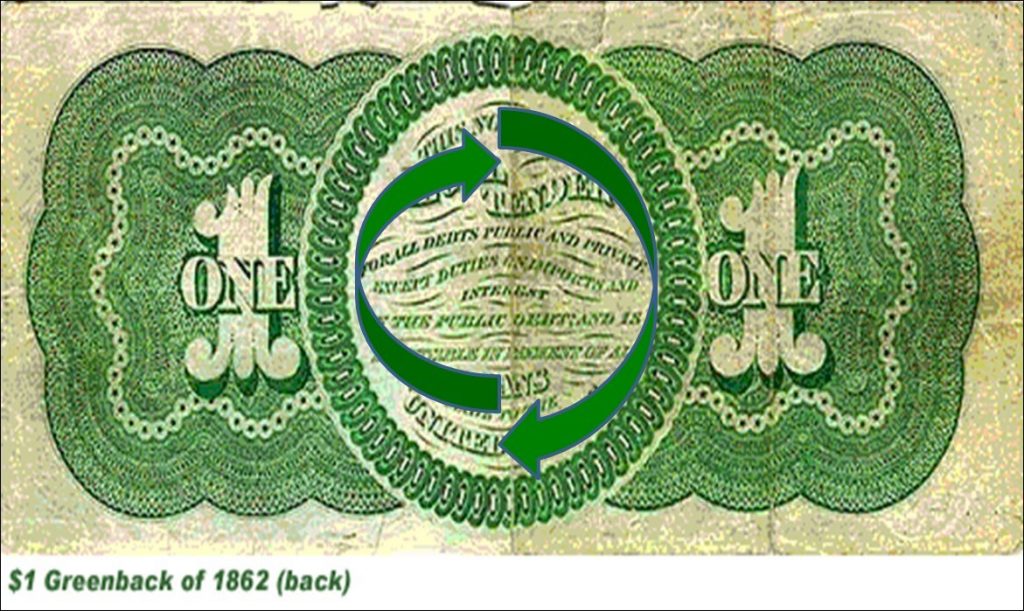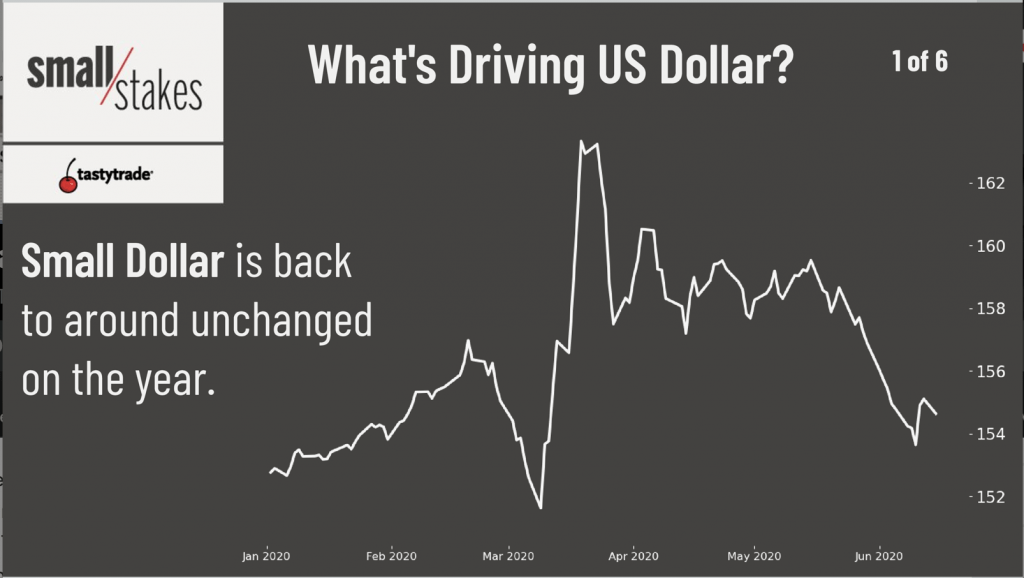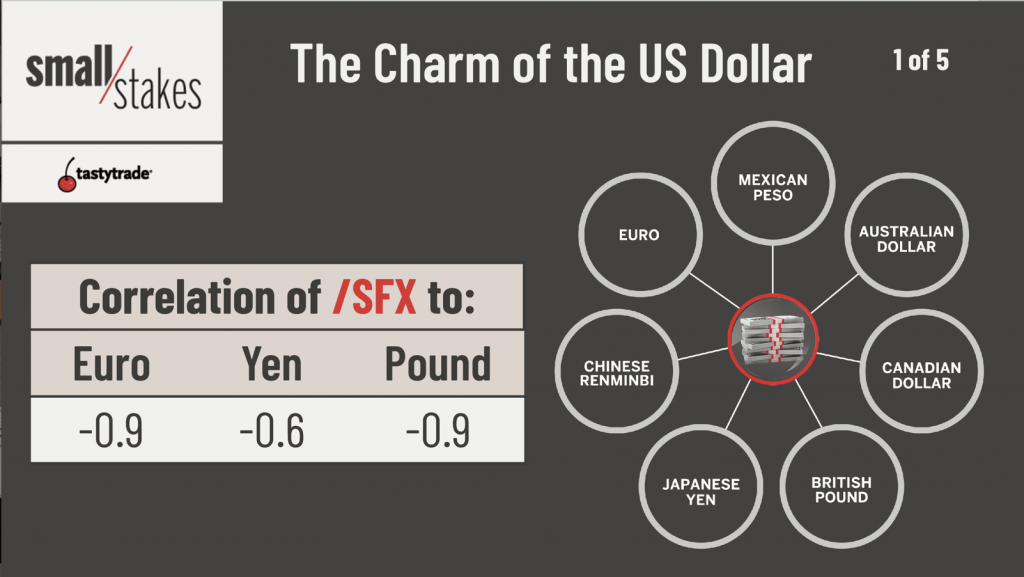Trading a Weakening Greenback With the New Small Dollar Index

The greenback can fluctuate in value based on a variety of complicated factors. These might be related to the U.S. economy, the global economy or a variety of major trends impacting the financial sector. But when it comes to recent behavior in the value of the dollar, many of those complexities appear to have been thrown out the window.
When global equity values crashed in March, the U.S. dollar rallied in epic fashion. And as global equity values rebounded in the last couple months, the dollar has steadily moved in the opposite direction—retracing a good chunk of that rally.
Those moves are clearly illustrated in the Small Dollar Index (SFX) price chart below:

Looking further back in dollar index history, one can see that over the last several years, the U.S. dollar has traded in mostly sideways fashion. That context is important because it underscores the price stability of the dollar during the broad-based equity rally observed in recent years.
This behavior may be of interest to investors and traders looking for a new trade idea that offers fresh diversification to their portfolio, or for a new idea when it comes to hedging risk.
For example, if equity markets were to once again enter correction territory in the near-term, it seems plausible that the dollar index could respond much like it did in March, by rallying higher.
At present, the S&P 500 has recaptured much of the 34% correction it suffered in late February and March. But, as illustrated by a 700-point drop in the Dow Industrial Average on June 24, the worst may not be over yet for equity markets.
Those looking for protection against another severe correction in equities, which leverages a product outside of stocks, may want to look more closely at U.S. dollar exposure.
While the foreign currency market gets overlooked sometimes, due to its perceived complexity, it is actually the largest absolute sector in the global financial markets—with a daily average volume of over $5 trillion.
The Small Dollar Index (SFX) from the Small Exchange takes a diversified, USD-forward approach to the foreign exchange market by combining euro, Chinese renminbi, Japanese yen, British pound, Canadian dollar, Australian dollar and Mexican peso exposures, as shown below:

The SFX also offers capital efficiency relative to other choices in the marketplace. For example, when trading a currency ETF such as FXE, the average investor needs to set aside 50% to 100% of the trade’s total value in cash. SFX, on the other hand, only requires 1% to 2% of the product’s value.
Similar to the rest of the Smalls, SFX prices move in increments of 0.01, with each tick representing a dollar. Trading hours in the Smalls are weekdays from 7:00 a.m. to 4:00 p.m. Central Time, with a universal expiration on the third Friday of every month, when all Smalls settle to cash.
Traders looking for a simple and capital-efficient way of trading the foreign exchange market may therefore find the Small Dollar Index (SFX) fairly compelling. Recent performance in the dollar suggests that it thrives as a “safe haven” when volatility in equities is rising—at least it did so in March.
Additionally, the dollar index remained relatively strong during the expansion in the U.S. economy over the last several years, which ran concurrent with a broad-based rally in the stock market.
To learn more about the SFX and other Small Exchange products, investors and traders can review these introductory videos when scheduling allows.Ongoing discussion on the Smalls and their place in the broader financial markets can also be accessed by tuning into the Small Stakes series on the tastytrade financial network.
Sage Anderson is a pseudonym. The contributor has an extensive background in trading equity derivatives and managing volatility-based portfolios as a former prop trading firm employee. The contributor is not an employee of luckbox, tastytrade or any affiliated companies. Readers can direct questions about any of the topics covered in this blog post, or any other trading-related subject, to support@luckboxmagazine.com.





















